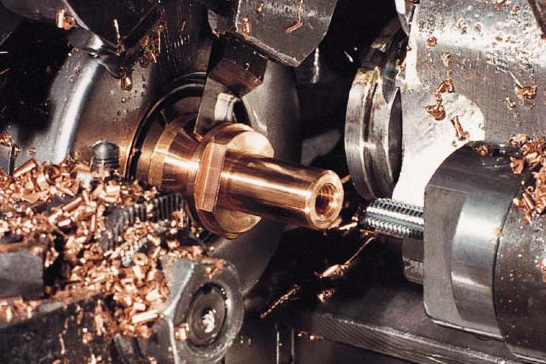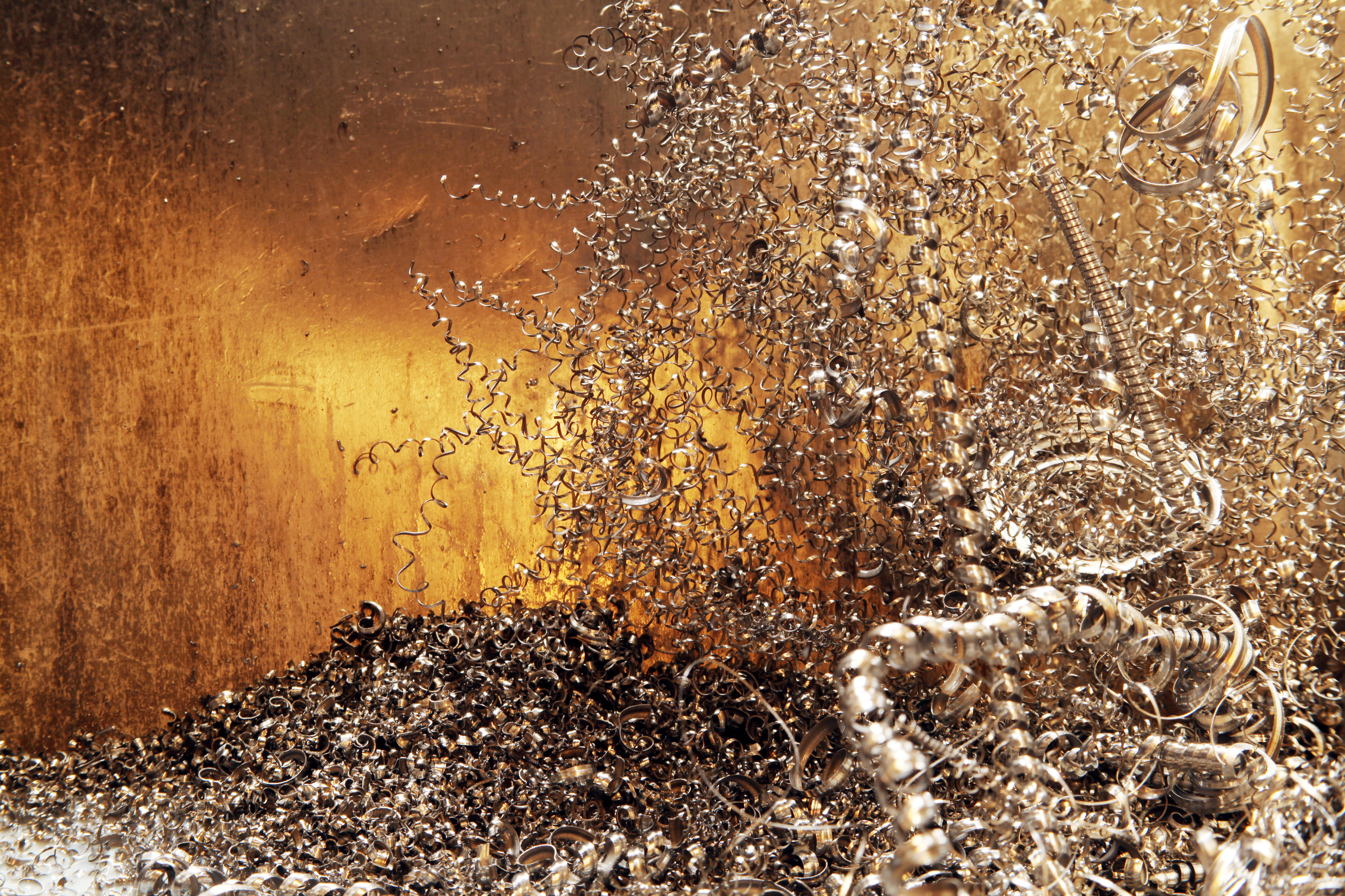Chip-removal processing
Compared to many other metallic construction materials, the majority of copper materials are easily machinable materials. CuZn39Pb3, the free-cutting brass, is often used as a standard of comparison when assessing the machinability of materials for the production of moulded and barrel turned parts of all kinds. Copper materials are suitable for all machining processes. However, the machining properties of different copper-based material groups differ significantly.
A criterion for the term machinability, which makes it possible to assess the suitability of a material for the most diverse machining processes, does not exist because of the complex interrelationships. The four machinability criteria of tool wear, chip formation, cutting forces and surface finish are used to assess the machining properties of copper and copper alloys.
Compared with steels of the same strength, both the cutting forces and the specific chip removal rates of brass free-cutting alloys, i.e. the chip volumes per unit of time and power, are many times more favourable. Unless specific technical requirements preclude its use, it is recommended to give preference to CuZn39Pb3 purely for reasons of chip removal.

Machining processes are characterised by material removal. In many cases, the actual shaping is done by machining, for example to produce turned parts. They are also used to remove unwanted unevenness from workpieces, such as when grinding or milling off burrs, to create specific functional points by drilling or threading, or to separate material by sawing or punching. Unalloyed copper has the desirable property of high toughness and high elongation. This property, combined with a relatively low strength, results in poor machinability, which must be accepted.
Chip formation is usually the most important criterion for the machinability of a material. Therefore, a ranking of materials for machining tasks is usually established on the basis of chip formation. In general, it can be said that the heterogeneous copper materials can be machined better than the homogeneous materials. Among the heterogeneous materials, the materials that contain a chipbreaker (usually lead) as an alloying element have the better machining properties. But even with homogeneous materials, chipbreakers improve the machining properties considerably, e.g. those of copper by adding tellurium (CuTeP), lead (CuPb1P) or sulphur (CuSP). Cast alloys usually have better machining properties than wrought alloys of the same composition and hard, solidified materials machine better than materials in the soft state. This is especially true for homogeneous materials such as copper, unalloyed, copper-nickel, lead-free copper-zinc alloys with a high copper content. Homogeneous alloys, especially in the soft state, tend to form long tangled chips that hardly break. Long chips impair the work flow, can block the machine tool or lead to the breakage of sensitive tools.
Brochure: Recommended machining parameters for copper and copper alloys
Are you looking for different content?